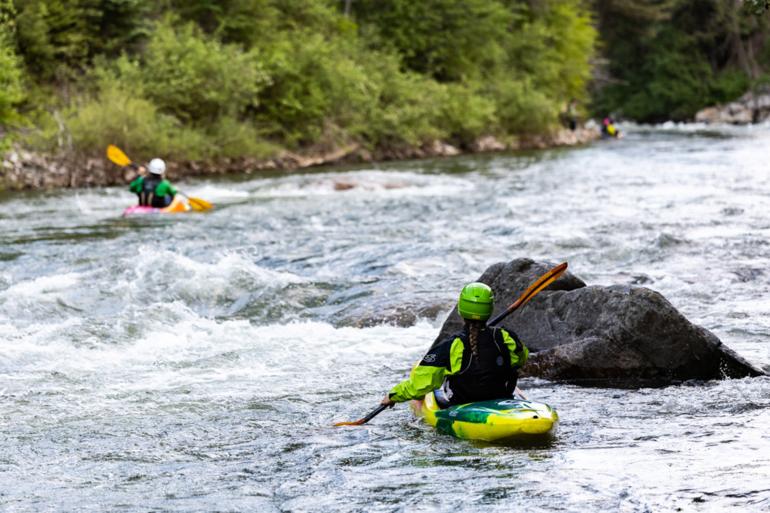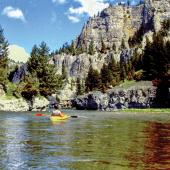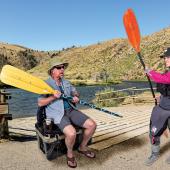The Golden Rules
Spring paddling safety.
As spring settles into the northern Rockies, whitewater enthusiasts eagerly watch the weather, waiting for winter snowmelt to come roaring down the rivers. In southwest Montana, river-runners appear from near and far to enjoy this lively stage of the hydrologic cycle. Managing the hazards of river season is complex—experience over time is the best way to minimize accidents. At Wave Train Kayak Team, we adopt a set of Golden Rules to stay safe on the river.
Always have footwear. Sure, good river shoes are necessary to comfortably walk to and from the water, but talk to any longtime river rat and you’ll hear stories of desperate scrambles on rocky banks to aid a fellow paddler. The ability to move quickly and surefootedly is a requirement of any good river companion.
Carry a throwbag (and a knife). To be useful in a river rescue, paddlers must have a rope and know how to use it. Equally important is the recognition that rope can become a hazard and that cutting someone free might be necessary should things not go as planned.
Dress for the take-out. On the first warm days of spring, we long to jump in our boats with nothing but a pair of board shorts and light insulation. Dressing for the take-out really means we dress for all eventualities on the river: an unexpected portage, a swim in the frigid Gallatin, or a rescue in which we’re standing in the current to help a paddling partner.
Huddle before you huck. The alliteration is nice, but this rule also applies to those of us who aren’t necessarily “hucking.” Rivers are fun because currents are chaotic. This does not mean our journey down them should be similarly chaotic. Planning ahead with paddling partners to organize our descent of rapids and falls, and making contingency plans to consider our backup safety, should be part of the pre-game ritual for all paddlers.
Know the group equipment. Ever been marooned in the middle of a rapid, broken paddle in hand, with no good way to retreat? It’s a depressing moment when you learn that no one packed a spare paddle. It’s not necessarily practical for every boat to have every piece of safety gear, but if you’re going light, know who’s planning to carry which items.
If I don’t occasionally see my team’s eyes glancing back to ensure I’m still with them, I start looking for new paddling partners.
Always boat with a buddy. River days are more fun with friends, and they have the added bonus of helping to keep us safe on the water. I love the ethic of self-rescue and I'm happiest if, when I find myself swimming down a river, I can gather all my equipment and get myself to shore. However, this is not always practical, nor is it the safest option. Having a buddy around can get you out of a tight spot and reduce the chances of losing gear.
Maintain the unbroken chain. There must be communication backward and forward while on the river—and this rule applies to all groups, large and small. I often find myself in the sweep-boat position, and if I don’t occasionally see my team’s eyes glancing back to ensure I’m still with them, I start looking for new paddling partners.
Courtesy, respect, and support. I love the river and have for a long time. I sometimes get into conversations about how this silly activity—sitting in a little plastic boat, bouncing through rapids—became such a big part of my life. When I was younger, I thought it was the excitement (and it may have been), but I realize now it is the people and the mutual experience. When on the river, make other paddlers feel safe and welcome by extending smiles and the ethic of mutual aid to as many possible.
Dave Zinn is the executive director and head coach of Bozeman’s Wave Train Kayak Team. He is a Wilderness EMT and Whitewater Rescue Technician.













